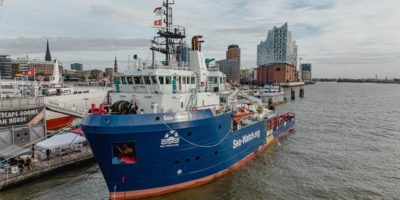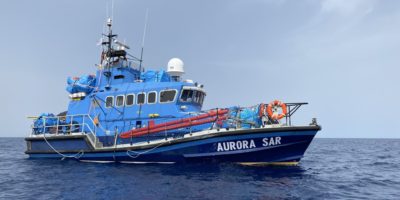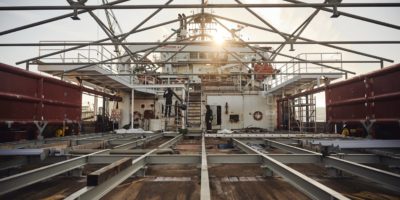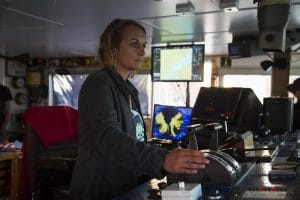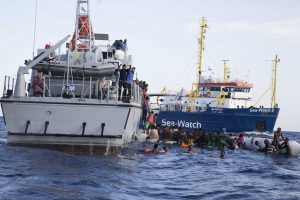The captain who steered the Sea-Watch 3 to her first rescue mission off the Libyan coast in early November was Pia Klemp, a Sea-Watch activist from Bonn, Germany. She has a lot to tell about European politics in the Mediterranean… and everyday life aboard a search and rescue vessel…
Only one in 100 ships in the world is steered by a woman. How did you become captain? Or do you say female captain?
Pia: Captain sounds better. After studying biology, I wanted to do something for marine conservation and hired at the Sea-Shepherd organization. That’s when I started out as a deckhand six years ago and worked my way up until I did the Master of Yachts, with which I’m now allowed to drive all sorts of private vessels.
How did you get into the rescue?
For every captain this is the duty. Apart from that it should be self understandable for overprivileged Europeans like us. But it is still absurd that this task is mainly done by volunteers. One has to imagine that suddenly we are responsible for the survival of thousands of people, because politics does not bother.
How do you make sailors out of a bunch of human rights activists?
Our crew members have a lot of passion and are professionals in their respective field. Many doctors take their annual leave to work aboard our ship. We make them seaworthy with training, for example for fire protection or knotting. That’s how the team grows together. But it can also be really exhausting if you’ve never been on a ship before. The media people on board for example are documenting our rescues with the camera and seasickness is particularly bad when you look at a screen, you get sick even faster.
What does your day aboard the Sea-Watch 3 look like?
As a captain, I’m responsible for everything, but I do not have to do it all on my own. My first shift on the bridge is from 10am to 4pm and the second from 10pm to 4am. Then I set the search pattern, in which we leave the coast and look out for boats in distress. Depending on how the ship is facing the waves and how many nodes we drive, it consumes less fuel. That saves money. And there’s a lot of paperwork to do when we bring rescues to the nearest safe haven.
When did you reach your limits?
That was one day in early November: 30 nautical miles north-east of Tripoli, people without life-jackets drifted in the water and we tried to rescue them as quickly and safely as possible. But suddenly a libyan patrol boat rushed into the action, without consulting us or the french navy present. I had to maneuver carefully to stay near the sinking dinghy while avoiding a collision with the libyan ship. It was awful to see people fighting for survival in the water. I could hear the screams up to the bridge. The Libyans have made no great effort to help.
The so-called Libyan Coast Guard forced 47 people back to Tripoli. You have supplied the other survivors aboard the Sea-Watch 3. How was everybody doing?
Often the mood on board is left out after a rescue. The passage to Italy is the first moment of security for months for many of us who pull ourselves out of the water. This is always a great moment. But this time some had to watch as their family members were taken back to Libya on the other ship. From there they had just fled. Many have shown us their scars. They were tortured in Libya. It is very sad and bitter to see in their faces what they have experienced on their way until they are finally on board with us.
What are your wishes for 2018?
I would hope that maintaining human rights in Europe is not dependent on small clubs being able to raise enough donations. That’s why I want safe and legal escape routes.
Interview: Theresa Leisgang
Photo: Lisa Hoffmann

